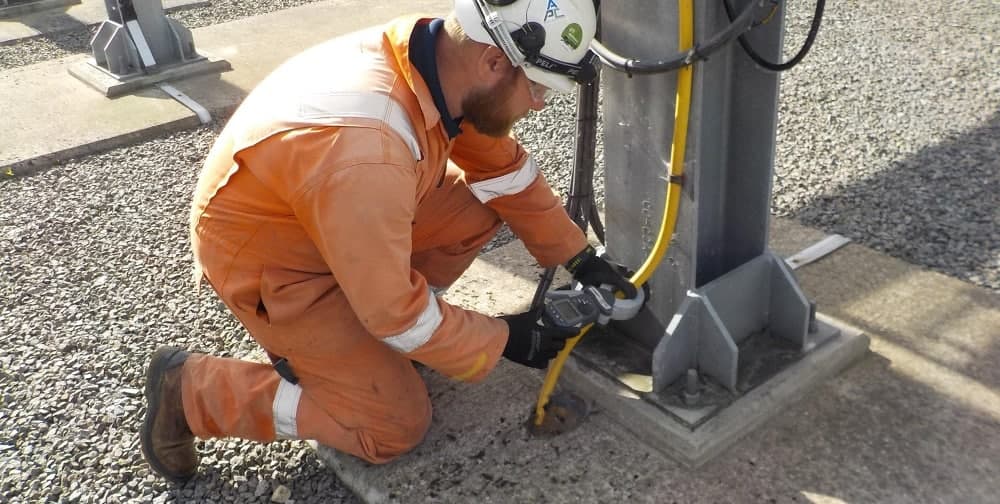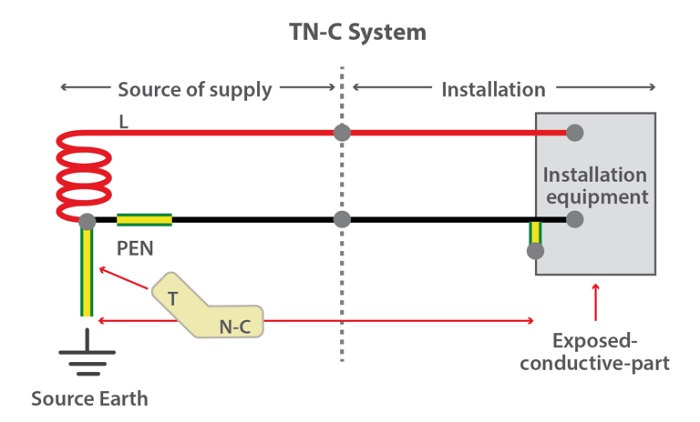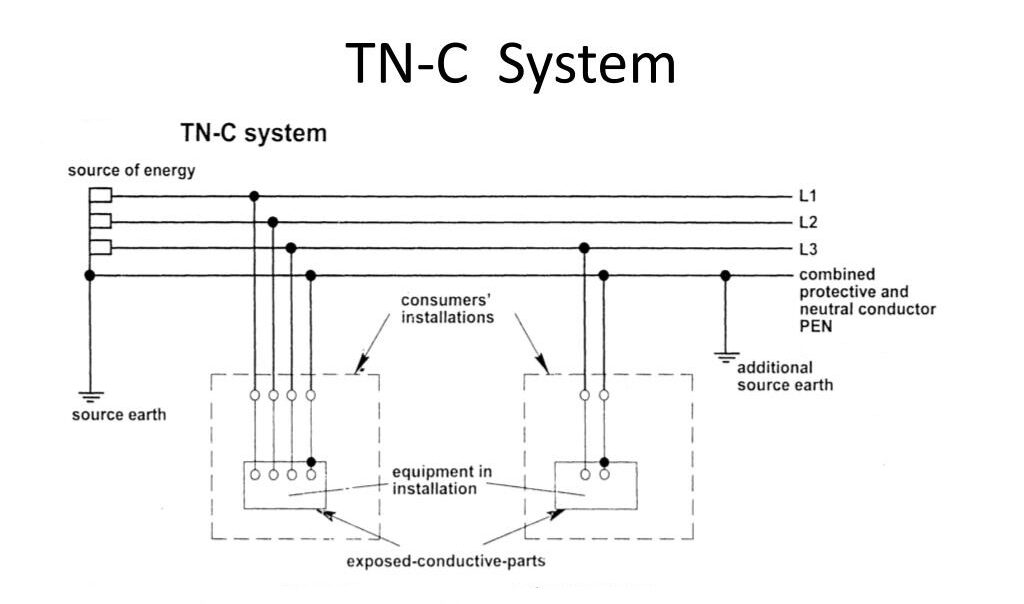The earthing of an electricity supply network requires its network plant and customer electrical equipment to be connected to earth to promote safety and reduce the possibility of damage to equipment. Effective earthing prevents long-term over voltages and minimizes the risk of electric shock hazards. Earthing also provides a predetermined path for earth leakage currents, which find use in disconnecting the faulty plant or circuit by operating the protective devices.
With distributed earth electrodes spaced as consistently as feasible, the TN-C system requires an effective equipotential environment within the installation. When employing electric items, the TNC Earthing System is critical. TNC Earthing Systems are available from a variety of Suppliers and Companies, as well as other manufacturers and distributors, and there are several Earthing Systems for sale on Linquip.
A full list of Earthing System services is available on the Linquip website, which covers all OEM fleets. Linquip suppliers can assist you with this. Please contact TNC Earthing System Experts in Linquip to learn more about how to connect with a diverse group of service providers who consistently deliver high-quality products.
In this article, we will discuss the TNC earthing system method. Read this new blog in Linquip to find out more about these types of earthing systems.
TNC earthing system characteristics
The neutral conductor is also used as a protective conductor and is referred to as a PEN (Protective Earth and Neutral) conductor. This system is not permitted for conductors of less than 10 mm2 or portable equipment.
The TN-C system requires an effective equipotential environment within the installation with dispersed earth electrodes spaced as regularly as possible. It is because the PEN conductor is both the neutral conductor and at the same time carries phase unbalance currents as well as third-order harmonic currents (and their multiples). The PEN conductor must therefore be connected to several earth electrodes in the installation.
In the TNC system, the protective conductor function has priority over the neutral function, and in particular, a PEN conductor must always be connected to the earthing terminal of a load. A jumper is also used to connect this terminal to the neutral terminal.
TNC earthing system diagram
In TNC earthing method Neutral and protective functions are combined in a single conductor throughout the system. (PEN—Protective Earthed Neutral).
The supply source is directly connected to the earth and all exposed conductive parts of an installation are connected to the PEN conductor.
The system is shown diagrammatically in the figure below.
What does TNC stand for?
In the symbol of the power supply method stipulated by the International Electrotechnical Commission (IEC), the first letter represents the relationship between the power system and the ground. For example, T indicates that the neutral point is directly grounded.
The second letter indicates the electrically conductive device exposed to the ground. For example, N means that the load is protected by zero.
The third letter indicates the combination of working zero and protective line. For example, C indicates that the working neutral line and the protection line are one, such as TNC earthing system. S indicates that the working neutral line and the protection line are strictly separated, so the PE line is called a dedicated protection line, such as TNS earthing arrangement.
Therefore, in TN-C (Terra Neutral – Combined) method, earth, and neutral share the same conductor (two-wire single-phase).
What’s The Difference Between PME And TNCS?
The combined earth/neutral conductor is linked to the ground in several locations along with the supply network, either buried underground or at the poles for overhead supplies. Because of the multiple earthing, a TNCS supply is commonly referred to as a PME supply (Protective Multiple Earthing).
Are TNCs Always PME?
It certainly does. Not all TN-C-S supplies are PME, and not all PME supplies are TN-C-S. Without the multiple earthing, you may get a TN-C-S supply directly from an on-site transformer.
Advantages of the TNC Earthing System
Here are some of the advantages of the TNC earthing method.
- The TNC earthing system always provides a return path for faults in the low voltage grid. The grounding conductors at the transformer and all customers are interconnected. This ensures a distributed grounding and reduces the risk of a customer not having a safe grounding.
- There is no overvoltage stress on equipment insulation.
- TNC system could work with simple over current protection.
- The low cost is the main advantage of using the TNC earthing method. Especially the PE conductor cost has the least cost among other earthing methods.
Disadvantages of the TNC Earthing System
The disadvantages of the TNC system are as follows.
- Faults in the electrical network at a higher voltage level may migrate into the low voltage grid grounding causing touch voltages at low voltage customers.
- A fault in the low voltage network may cause touch voltages at other low voltage customers.
- The potential risk of exposed conductive parts with the neutral conductor in the event of a break-down of the neutral network conductor as well as for low voltage network phase to neutral and phase to ground faults and medium voltage to low voltage faults.
- TN-C system is less effective for Electromagnetic Compatibility (EMC) problems.
- TNC earthing method is the least safe one among earthing methods.
- This type of earthing is not commonly used in some countries due to the risks associated with fire in hazardous environments and due to the presence of harmonic currents making it unsuitable for electronic equipment.
So, there you have a detailed description of the TNC earthing system. If you have any experience with other types of earthing method, let us know by leaving a reply in the comment section. Is there any question we can help you through? Feel free to sign up on Linquip to get the most professional advice from our experts.
Download TNC Earthing System PDF
Buy Equipment or Ask for a Service
By using Linquip RFQ Service, you can expect to receive quotations from various suppliers across multiple industries and regions.
Click Here to Request a Quotation From Suppliers and Service Providers
Read More In Linquip
- Earthing System: A Simple Explanation about Grounding System
- IT Earthing System: The Key and Essential Facts Everybody Wants to Know
- Types of Temperature Sensor and Their Application
- Important Detailed Information About The Types of Transducers
- Solid vs Stranded Wire (A Practical Guide)
- What is a Fuse Wire & How Does It Work?
- Types of Electrical Wire + Application (Complete Guide)
- Top 10 Machine Shops in Tampa in 2022 (Clear Guide)
- 10 Types of Molding Machinery + PDF (Clear Guide)
- 3 Common Types of Electrical Connectors (Clear Guide)
- Types of Sensors Detectors/Transducers: An Entire Guide
- Top Bearing Suppliers in USA & Worldwide in 2022
- 15 Types of Electrical Power Connectors (Clear Guide) + PDF
- The 8 Best Circuit Breaker Locators in 2022






So a DNO comes along replaces a single phase cable to a cottage at rear of my property, apparently the cable was suffering voltage drops/spikes and it was piggy backing off my supply. They dug up outside my house in the pavement and spliced in a new cable, which was thicker than the original maybe 3 phase ? as the guy is a Ham Radio enthusiast. They converted what looks to be a TN-S system to a TN-C (no spikes in ground) they connected the earths and neutral. In getting to the old rag wrapped power cable they broke out a clay BT Duct and exposed and bashed a 15mm water pipe. The latter now sit directly against the Pen connector casing. They left the old cable in place not sure how they terminated it they also stopped short by some 20m of the old cottage and connected the 3phase to the old single phase supply ? Both cables are more than 30-40m long. Not long after I noticed that my Broadband was slowing and randomly dropping out ? So I checked for Rein/emi on my telecoms and ethernet cable – Low and behold on 600-700khz a load power frequency type aggressive growl exists. Its coming of my water pipes and all BT poles and pavement for well over 150m – Would I be taking a massive leap of poor judgement if I were to suspect that the new installation is causing all this havoc ?
Thanks for sharing your experience with us, Paul. You are encouraged to visit our expert community through the following link, where you can find hundreds of experts, especially in the field of electrical engineering, that can completely help you with this issue!
https://www.linquip.com/experts/leaderboard